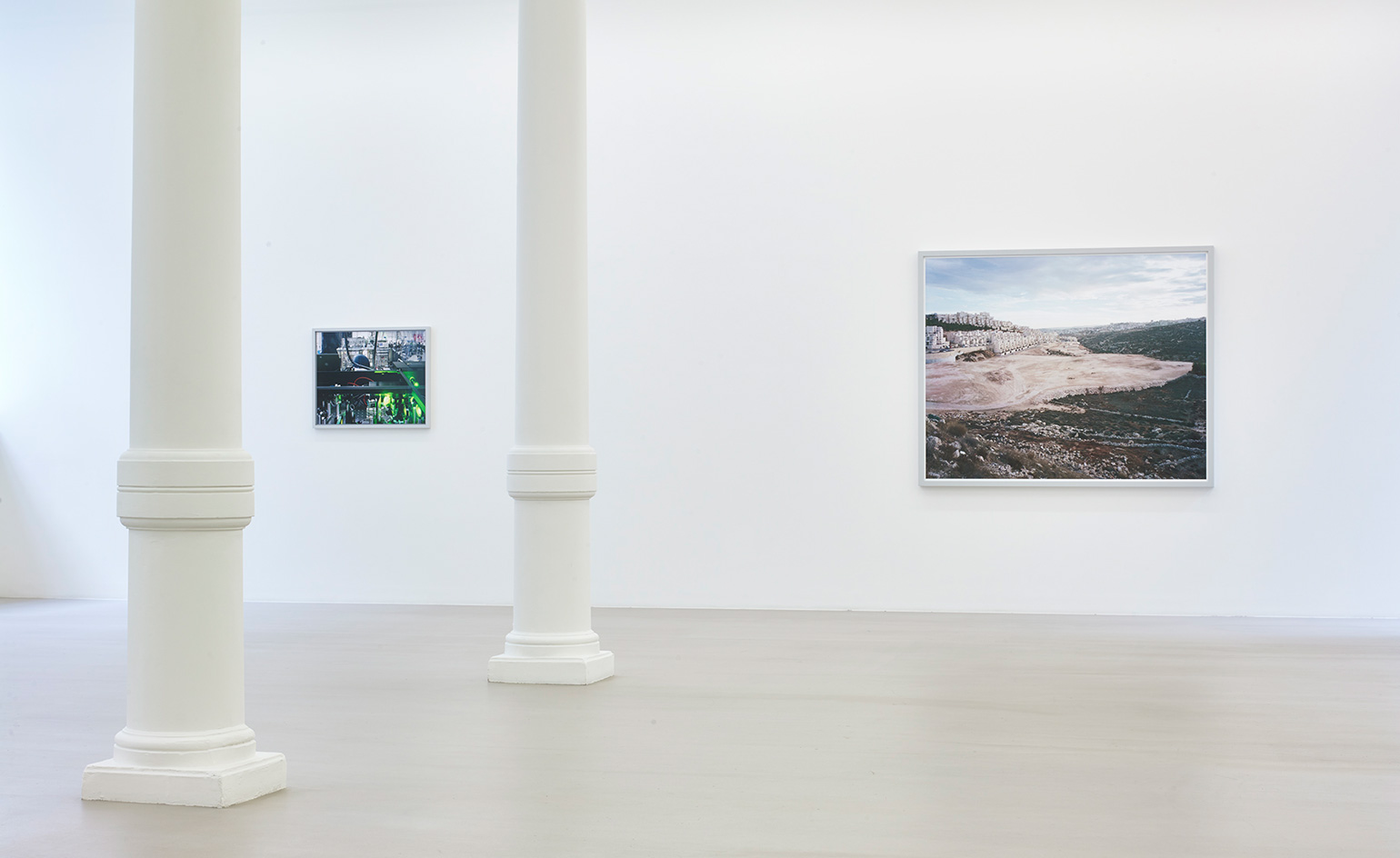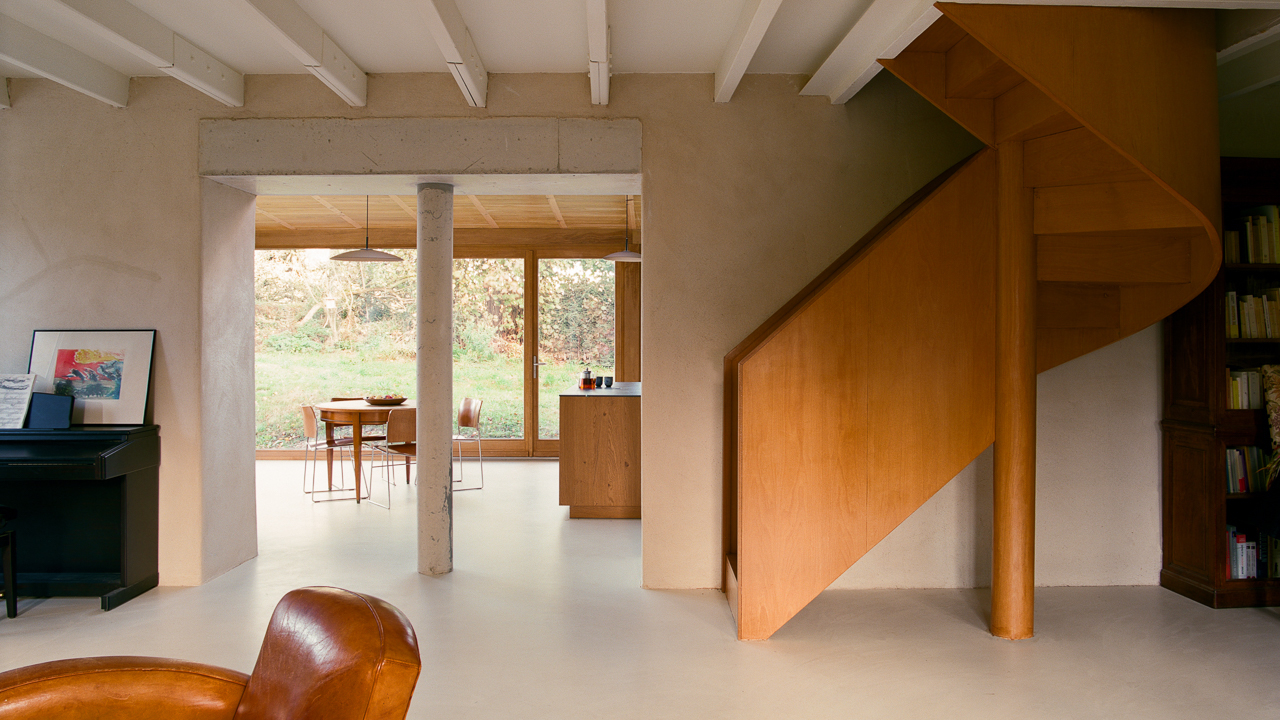Reading between the lines: Thomas Struth lets landscape do the talking

To Thomas Struth, choosing what not to include in each frame is as important as what makes the cut. In his current show at London's Marian Goodman Gallery, it's especially important to read between the lines. On six epic expeditions across Israel and Palestine between 2009 and 2014, Struth chose to capture 'the banal, the hopeless, the unheroic'. In a landscape defined by conflict, disenfranchisement and media hyperbole, he let the naked landscape express its own hierarchy.
The Berlin- and New York-based photographer embarks on new territory in this splendid Soho space, both literally and metaphorically. It is his first official foray into a conflict zone and the first instance in which the locale dictated the theme, rather than vice versa. It was as if, he says, 'Israel and Palestine were a geographical container for the scope of the human condition'.
Appearing, at first glance, to want to be taken at face value, Struth's large-scale colour prints are politically charged. That's thanks to their scrupulous composition, often conceived over several visits to a particular spot. In 'Har Homa, East Jerusalem' (2009), a swath of earth levelled for settlement swallows up the cracked earth like a biblical flood. 'The Holy Land is such a desirable place,' says the artist, 'yet in reality it is so dire, desert-like.' In 'Silwan, East Jerusalem' (2009), a mound of rubble looms in the foreground; sculptural clouds weigh on the horizon; a veiled villager emerges on a dusty path, laden with bags. 'The woman noticed me,' he says. 'She was not happy. It was the perfect example to show the situation of conflict is within everyone.'
Struth has arranged the gallery with the same scrupulous composition, 'like a piece of music, with themes, variations and a quiet denouement'. He has framed bolder pieces between pillars to highlight the interior architecture. The climax is the sun-drenched upstairs loft. He includes some ostensibly unrelated photos, taken during the same period in cable-tangled, high-tech facilities in California. Aesthetically and ideologically, the two themes do intersect. 'Technological research requires the same obsession and tunnel vision of an intractable conflict,' he says. 'And in the scientific world, different cultures work together to make progress.'
He believes, sadly, that the obsession with technological progress distracts us from the greater need for political progress.

The show marks Struth's exploration of new territory. The works are his first official foray into a conflict zone.

The show is, according to Struth, an attempt to capture 'the banal, the hopeless, the unheroic.'

For the very first time, the locale dictated the theme of Struth's work, rather than the other way around.

'The Holy Land is such a desirable place,' says the artist, 'yet in reality it is so dire, desert-like.'

Struth has arranged the gallery scrupulously, framing bolder pieces between pillars to highlight the interior architecture.

'Israel and Palestine were a geographical container for the scope of the human condition,' he says.

Upstairs are a number of ostensibly unrelated photos, taken during the same period in cable-tangled, high-tech facilities in California.

Somewhat suprisingly, the the two themes do intersect. 'Technological research requires the same obsession and tunnel vision of an intractable conflict,' he says.

'In the scientific world, different cultures work together to make progress.'
ADDRESS
Marian Goodman Gallery
5-10 Lower John Street
London
W1F 9DY
Receive our daily digest of inspiration, escapism and design stories from around the world direct to your inbox.
Based in London, Ellen Himelfarb travels widely for her reports on architecture and design. Her words appear in The Times, The Telegraph, The World of Interiors, and The Globe and Mail in her native Canada. She has worked with Wallpaper* since 2006.
-
 This Mexican architecture studio has a surprising creative process
This Mexican architecture studio has a surprising creative processThe architects at young practice Pérez Palacios Arquitectos Asociados (PPAA) often begin each design by writing out their intentions, ideas and the emotions they want the architecture to evoke
-
 The Bombardier Global 8000 flies faster and higher to make the most of your time in the air
The Bombardier Global 8000 flies faster and higher to make the most of your time in the airA wellness machine with wings: Bombardier’s new Global 8000 isn’t quite a spa in the sky, but the Canadian manufacturer reckons its flagship business jet will give your health a boost
-
 A former fisherman’s cottage in Brittany is transformed by a new timber extension
A former fisherman’s cottage in Brittany is transformed by a new timber extensionParis-based architects A-platz have woven new elements into the stone fabric of this traditional Breton cottage